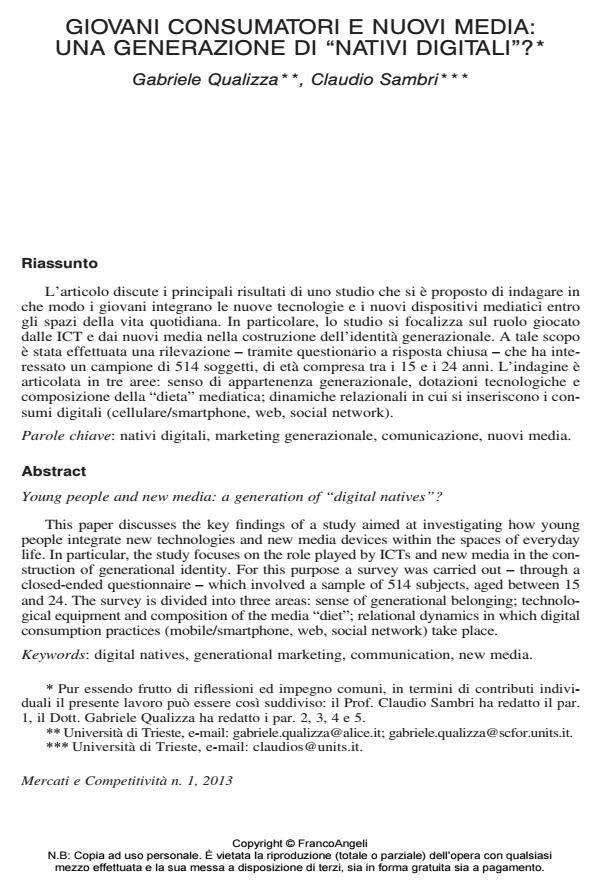Young people and new media: a generation of "digital natives"?
Journal title MERCATI E COMPETITIVITÀ
Author/s Gabriele Qualizza, Claudio Sambri
Publishing Year 2013 Issue 2013/1
Language Italian Pages 23 P. 119-141 File size 527 KB
DOI 10.3280/MC2013-001008
DOI is like a bar code for intellectual property: to have more infomation
click here
Below, you can see the article first page
If you want to buy this article in PDF format, you can do it, following the instructions to buy download credits

FrancoAngeli is member of Publishers International Linking Association, Inc (PILA), a not-for-profit association which run the CrossRef service enabling links to and from online scholarly content.
This paper discusses the key findings of a study aimed at investigating how young people integrate new technologies and new media devices within the spaces of everyday life. In particular, the study focuses on the role played by ICTs and new media in the construction of generational identity. For this purpose a survey was carried out - through a closed-ended questionnaire - which involved a sample of 514 subjects, aged between 15 and 24. The survey is divided into three areas: sense of generational belonging; technological equipment and composition of the media "diet"; relational dynamics in which digital consumption practices (mobile/smartphone, web, social network) take place.
Keywords: Digital natives, generational marketing, communication, new media
- Mobile augmented reality as an internationalization tool in the “Made In Italy” food and beverage industry Lara Penco, Francesca Serravalle, Giorgia Profumo, Milena Viassone, in Journal of Management and Governance /2021 pp.1179
DOI: 10.1007/s10997-020-09526-w - Destination management organizations (DMOs) and Digital Natives: the neglected “informal expertise” in web 2.0 implementation and social media presence. Insights from the Italian Friuli Venezia Giulia DMO Marika Gon, Harald Pechlaner, Francesco Marangon, in Information Technology & Tourism /2016 pp.435
DOI: 10.1007/s40558-016-0068-x
Gabriele Qualizza, Claudio Sambri, Giovani consumatori e nuovi media: una generazione di "nativi digitali"? in "MERCATI E COMPETITIVITÀ" 1/2013, pp 119-141, DOI: 10.3280/MC2013-001008